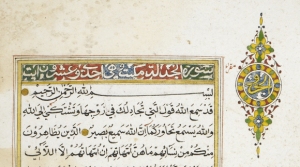Recently the Portuguese printing house Imprensa Nacional in Lisbon has published an edition of a manuscript written in the Northern European kind of hand that was in use in the 17th and18th century, on the cover of which is written as title, Livro dos Pantuns.
This manuscript, which had been known to the famous 19th-century scholar of Creole Portuguese, Hugo Schuchard, has been recently rediscovered in the Lisbon Museu Nacional de Arqueologia by the linguist Prof. Ivo Castro and its librarian, Livia Coito in the collection of the Museum’s founder and polymath, José Leite de Vasconcellos.
One half of the manuscript’s poems consist, as its title indicates, of series of verses in a kind of pantun-form. These are worded in a now disappeared non-standard, Mardijker, variant of Malay, and are in this book presented in the Mardijker Malay reconstructed by Alexander Adelaar.
The manuscript’s other half consists of poems in the now defunct Creole-Portuguese that was spoken by the Mardijkers in Batavia until the end of the 19th century, and in Tugu it persisted into the early 20th. Of these poems, most consist of entreaties of the ardent but scorned lover addressed to his fair lady.
Whereas both in the Malay and the Creole Portuguese parts of the Livro such love poetry is the most conspicuous presence, the manuscript also contains some poems that are interesting because of their link to important events and persons in the VOC in late 17th-century history. This is, for example, the case with the poem about the presumed ‘rebellion’ against Batavia’s High Government in 1689 by Captain Jonker, the leader of the VOC’s Muslim Ambonese militia (Panton Joncker).
In view of the internal evidence from their contents, the pantuns and cantigas of the Livro must have been composed in the late 17th or early 18th century for and by the Mardijker communities of Batavia and/or Tugu.
In the new book the Livro’s poems have been provided with full transliterations and translations as well as introductions by Ivo Castro, Hugo Cardoso, Allan Baxter, Sander Adelaar and Gijs Koster. The book also contains a facsimile edition of the entire manuscript.
(Announcement by Gijs Koster)



Recent Comments